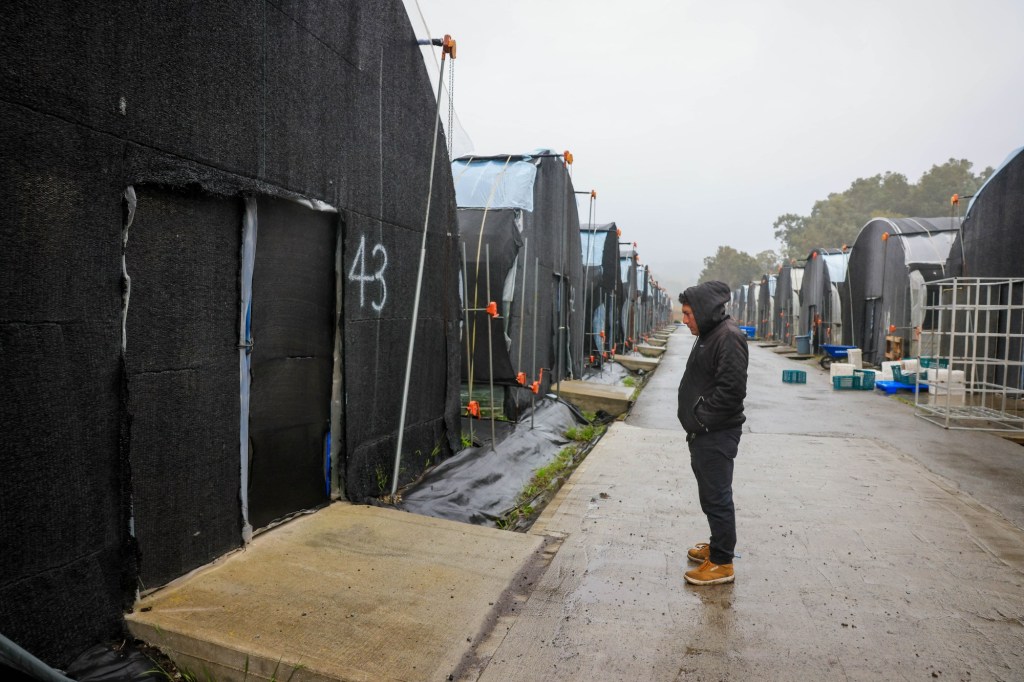A year after four of his colleagues were killed in the largest mass shooting in San Mateo County history, Juan Flores Lopez still sorts through the mail for the man who shot them. The envelopes are posted to an address that no longer exists: a tarp-covered shack at the mushroom farm where Chunli Zhao lived before police say he went on a rampage that eventually killed seven a year ago this Tuesday.
The dead were his neighbors as well as his co-workers, farmworkers who lived together with their families in flimsy trailers steps from the sheds where they harvested shiitake mushrooms by hand. The roofs leaked, and heat and running water were no guarantee. At another farm three miles south, where Zhao is suspected of killing three people, workers lived in mold-infested rooms inside mushroom-growing warehouses.
Usually hidden from public view, the massacre brought the squalid living conditions to light. A year later, the uninhabitable trailers, including Zhao’s, at California Terra Garden have been condemned by the county and demolished. The housing at Concord Farms was vacated. Workers at both were relocated to temporary housing.
Under pressure to ensure other farmworkers wouldn’t have to endure similar conditions, county officials created a task force in February to inspect all farmworker housing in the county. The inspections are voluntary.
Both state and county dollars are targeted for new housing, but none have been completed yet.
How much has really changed in Half Moon Bay?
While living conditions for the victims have markedly improved, advocates say farmworkers across the county and beyond are still living in overcrowded, substandard housing.
“People have been fighting for farmworker wage increases and better housing conditions forever,” said Belinda Hernandez Arriaga, executive director for ALAS, a Half Moon Bay-based nonprofit that provides counseling and other services to farmworkers. “What’s really sad, when I stop and think about it, is just…
Read the full article here







